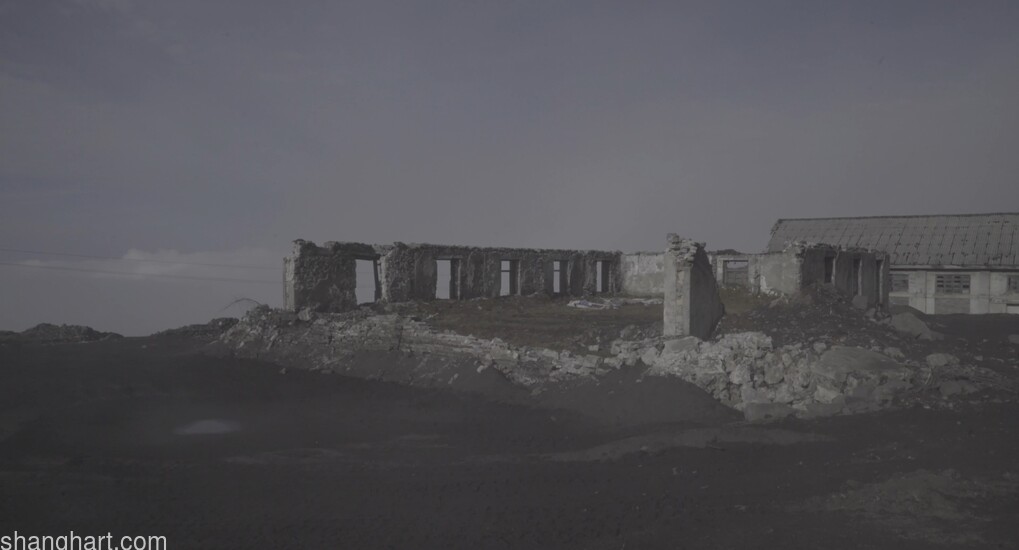65 million years ago, the Indian plate violently collided with the Eurasian plate from south to north and the Paleo-Tethys Sea retreated. This led to the birth of Hengduan Mountains. Hence, those ancient mineral deposits were born in the ocean. According to the legend of the Tibetan and Yi people in the mountains of southwest China, ore is the food of the mountain gods. But who could have ever predicted that for thousands of years, humans have been taking away the food from the mountain gods, for paving the way to modern civilization.
When Tethys Sea retreats westward, leaving the reverberation (2022) is based on the white conch revered in high-altitude mountains. The moving-images are switched between freeze-frame shots, all related to "landscapes". These landscapes focus on the abandoned mining areas and the land in the Hengduan Mountains in southwest China. As for The text and narration corresponding to the video, one is from an old man of the Ersu ethnic group who is using their endangered language to tell the ancient legend of the white conch, and the other is adapted from Novalis's unfinished novel Heinrich von Ofterdingen (1802), which explores the human’s experience in the face of ore.
In the relationship between the ephemerality of the scale of life and the permanence and change of the land, This work summons an ancient time and space. Although we can only see the current mining ruins, nature and mountain forests, through the polyphony of video and text in this work, the aroused imagination becomes a stack of geological layers. The white conch is like a key, acting as a link between the dialogues in different scales as well as a time passage from the present to the past, the mountain to the ocean, the person to the stone.


